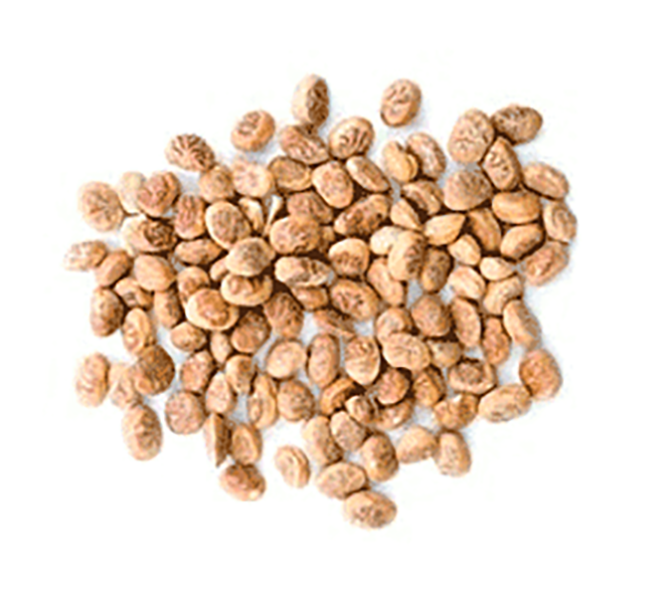FabulousFusionFood's Spice Guide for Chironji Home Page
 Seeds of Chironji,
Buchanania
lanzan.
Seeds of Chironji,
Buchanania
lanzan.
Welcome to the summary page for FabulousFusionFood's Spice guide to Chironji along with all the Chironji containing recipes presented on this site, with 6 recipes in total.
This is a continuation of an entire series of pages that will, I hope, allow my visitors to better navigate this site. As well as displaying recipes by name, country and region of origin I am now planning a whole series of pages where recipes can be located by meal type and main ingredient. This page gives a listing of all the Cornish recipes added to this site.
These recipes, all contain as a major flavouring.
Chironji, Buchanania lanzan (also known as Charoli, chirolo, charooli, almondette, calumpong nut, Cheronjee, Cuddapah almond, Hamilton mombin) is a spice made from the seeds of the Buchanania lanzan tree, a member of the Anacardiaceae (cashew) family that's native to northwestern India.
Buchanania lanzan is a medium-sized deciduous tree that grows to about 15m tall. It is common to the forests of northwestern India, typically on dry ravine lands (it does not like its roots to be waterlogged). It can be identified by the dark grey crocodile bark with red blaze and is considered an excellent species for afforesting and stabilizing hill slopes. It has thick leathery leaves which are broadly oblong, with blunt tip and rounded base. Leaves have 10-20 pairs of straight, parallel veins. Pyramidal panicles of greenish while flowers appear in early spring (January to March). These ripen into the fruit from April to May and the fruit remain on the tree for many months.
The kernels of the fruit are eaten as a nut and used as a spice. These are the Chironji, which are soft, taste like almonds and have a soft texture rather like pine nuts. They are commonly used in Indian sweets and desserts, but are also ground into powders to thicken savoury sauces and to flavour batters. Chironji is also a common ingredient for thick, meaty, kormas. They can also be added to minced (ground) meat kabobs and impart a subtle nutty flavour. They are also dry roasted and used as a garnish for desserts and rice dishes (especially biryanis).
The chironji nut is extracted from the fruit first by peeling and then by soaking the nuts in fresh water over night at room temperature. The following day, the skins are rubbed away with a kitchen towel. The seed within is lentil-sized, slightly flattened and has a distinct almond-like flavour. They can be found in Indian groceries and should be stored in the freezer to preserve their flavour. They are rich in many sweet oils and can be quite expensive.
Charoli seeds are used in the Ayurveda and Unani systems of medicine for treating coughs and asthma.
This is a continuation of an entire series of pages that will, I hope, allow my visitors to better navigate this site. As well as displaying recipes by name, country and region of origin I am now planning a whole series of pages where recipes can be located by meal type and main ingredient. This page gives a listing of all the Cornish recipes added to this site.
These recipes, all contain as a major flavouring.
Chironji, Buchanania lanzan (also known as Charoli, chirolo, charooli, almondette, calumpong nut, Cheronjee, Cuddapah almond, Hamilton mombin) is a spice made from the seeds of the Buchanania lanzan tree, a member of the Anacardiaceae (cashew) family that's native to northwestern India.
Buchanania lanzan is a medium-sized deciduous tree that grows to about 15m tall. It is common to the forests of northwestern India, typically on dry ravine lands (it does not like its roots to be waterlogged). It can be identified by the dark grey crocodile bark with red blaze and is considered an excellent species for afforesting and stabilizing hill slopes. It has thick leathery leaves which are broadly oblong, with blunt tip and rounded base. Leaves have 10-20 pairs of straight, parallel veins. Pyramidal panicles of greenish while flowers appear in early spring (January to March). These ripen into the fruit from April to May and the fruit remain on the tree for many months.
The kernels of the fruit are eaten as a nut and used as a spice. These are the Chironji, which are soft, taste like almonds and have a soft texture rather like pine nuts. They are commonly used in Indian sweets and desserts, but are also ground into powders to thicken savoury sauces and to flavour batters. Chironji is also a common ingredient for thick, meaty, kormas. They can also be added to minced (ground) meat kabobs and impart a subtle nutty flavour. They are also dry roasted and used as a garnish for desserts and rice dishes (especially biryanis).
The chironji nut is extracted from the fruit first by peeling and then by soaking the nuts in fresh water over night at room temperature. The following day, the skins are rubbed away with a kitchen towel. The seed within is lentil-sized, slightly flattened and has a distinct almond-like flavour. They can be found in Indian groceries and should be stored in the freezer to preserve their flavour. They are rich in many sweet oils and can be quite expensive.
Charoli seeds are used in the Ayurveda and Unani systems of medicine for treating coughs and asthma.
The alphabetical list of all Chironji recipes on this site follows, (limited to 100 recipes per page). There are 6 recipes in total:
Page 1 of 1
| Aurangabadi Naan Qaliya Origin: India | Gajjar Barfi (Carrot Fudge) Origin: India | Panjiri Origin: India |
| Basundi (Thickened Milk Dessert) Origin: India | Mawa Peda Origin: India | Shrikhand (Sweet Yoghurt with Saffron) Origin: India |
Page 1 of 1